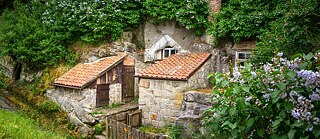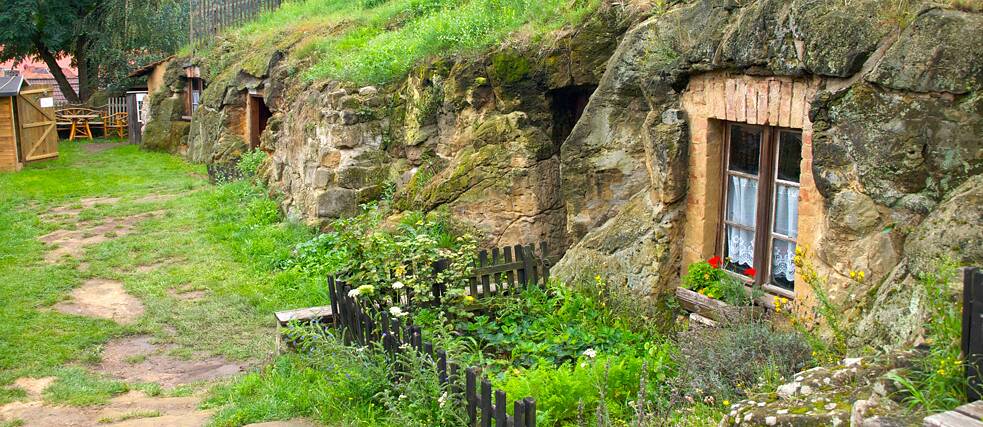What’s the solution when housing is in short supply? Once upon a time in the village of Langenstein in Germany’s Harz region, people decided simply to carve themselves caves in the sandstone rock. Some of these homes can still be visited to this day – and actually look pretty cosy.
The historic cave houses in the Harz region look like they have jumped right out of the pages of a surreal fairy tale. Though their living rooms, kitchens and children’s bedrooms are now furnished with the old-fashioned cupboards, sofas and beds that would have been found in any modest home in the nineteenth century, their walls are still bare rock. Their stone roofs have grass growing on them and only the front rooms get a small amount of light through the curtain-framed windows in the rock.
There are of course a number of famous cave settlements elsewhere, such as in Italy, Georgia or Turkey. Though perhaps better known, however, they are by no means the only ones: in the nineteenth century, it was not at all unusual for families with children to live in the caves in the Harz region – some even established small herb gardens in front of their homes. Twelve cave houses have survived to this day, two of them close to the ruins of Heimburg Castle and ten terraces at Schäferberg hill in the village of Langenstein. They are testimony to the great creativity of workers’ families in the past and a reminder of how talented they were as architects. On the other hand, they also reveal just how cramped living conditions were at the time – not fairy tale-like at all.
It was probably the Germanic tribes who originally carved the caves in the sandstone in the Harz. However, most of the homes were built in the nineteenth century because there was a shortage of housing in Langenstein. To resolve the problem, rural workers simply built homes for themselves in the rock. Nonetheless, the dwellings, which offered around 30 square metres of living space, were by no means hovels for the poor. In fact, life here was in some ways better than in the village, because there was more sunshine up on the hill and temperatures inside the caves were pleasant. It was not until 1916 that the last residents moved out, after which this cultural treasure faded into oblivion, the rooms being used only to store rubble or vegetables or as pens for animals. It is only thanks to the many volunteers from the registered non-profit “Langensteiner Höhlenwohnungen e.V.” (Langenstein cave dwellings) that five of the refurnished caves can now be visited. Tours can also be booked, providing fascinating insights into life in the Harz caves.
Detours
What does Görliwood mean, why can you find a piece of the Caribbean in Bavaria and where can you dance in front of bucket wheel diggers? In our series we take you on a trip each month to somewhere in Germany that you may not yet know but should definitely be introduced to. We reveal places that are not to be found on the usual tourist trails. Are you ready for a bit of a detour?
November 2024




